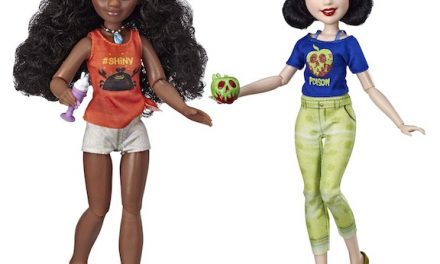
Diahann Carroll posed with the talking version of her Julia portrait doll.
A Broadway song from “Seesaw” points out that “it’s not where you start; it’s where you finish.” That Cy Coleman-Dorothy Fields lyric definitely applies to Diahann Carroll. Born in 1935 as Carol Diahann Jonson, the infant entered the world in the Bronx, New York. Her parents, who were transplanted Southerners, soon moved with the newborn to Harlem. It was a fortuitous decision. Surrounded by artistic people, musicians, actors, young Carol Johnson was not afraid to follow her performing bliss. For doll collectors, this was a fantastic evolution. In 1969, Diahann Carroll would be made into a doll, and this transformation remains a treasured accomplishment. The Julia doll was, and still is, a beautiful portrait rendering.
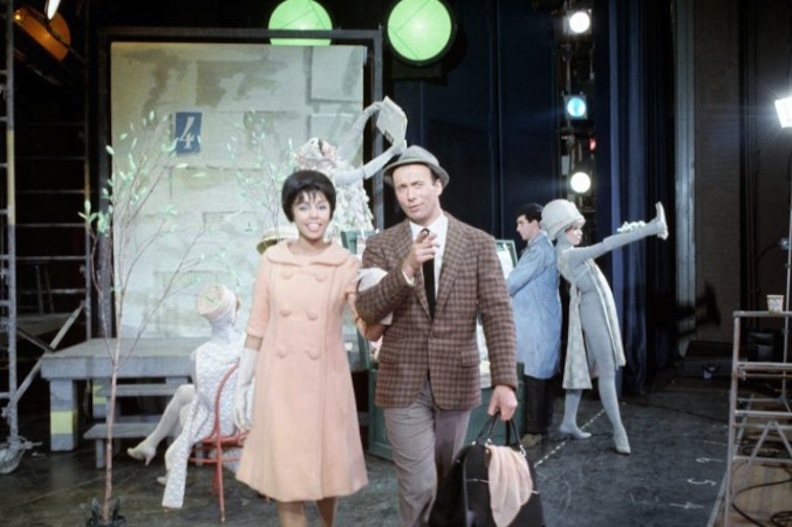
Diahann Carroll won a Tony Award for her acting and vocalizing in “No Strings.”
Diahann Carroll passed away October 4, 2019, after a long battle with cancer, at age 84. Her obituaries will salute her groundbreaking work in the theater and on television. The first black woman to win a Tony Award for “Best Actress in a Musical,” Carroll was setting her own path in 1962. However, her success onstage did not necessarily translate to the big screen. Though she had appeared on film in “Carmen Jones” and “Porgy & Bess,” she was sidelined to second-fiddle roles. Dorothy Dandridge was the go-to screen siren, and she embodied the leading lady. Dandridge’s casting left Carroll to play best friend parts or romantic rivals.
Interestingly, in 1961, Carroll played a dramatic part opposite Sidney Poitier in “Paris Blues.” According to news reports, Poitier and Carroll began a steamy love affair back in 1959 during “Porgy & Bess.” He persuaded Diahann to leave her husband, and he swore he would exit his marriage, too. Carroll kept up her end of the bargain, but Poitier did not follow suit. For nine years, Diahann Carroll continued to be entwined with him. She said that she lived in hope that he would find the courage to call his marriage quits. He never did. (Carroll would go on to marry three more times after her first divorce. Her fourth and last husband was fellow singer Vic Damone.)
It was in 1968 that Diahann Carroll entered the collectible world’s consciousness. By this time, she had movie experience, Broadway successes, nightclub engagements, and fashion layouts to her credit. Carroll was lauded for her grace, her beauty, and her talent. The Civil Rights Movement had heated up in the early 1960s, and 1968 was an incendiary year. Reverend Martin Luther King, Jr. was assassinated in April of this year, and racial tension was palatable. Riots, protests, arson, and unrest dominated the nightly news. Television viewers were treated to images of destruction, devastation, and hostility on a daily basis. It seemed that the country might never heal.
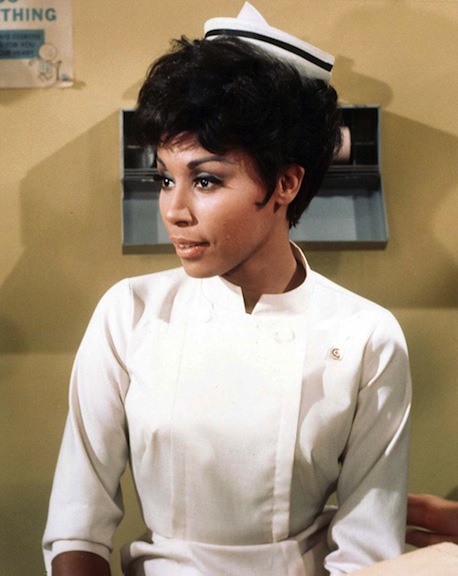
Diahann Carroll achieved enduring pop culture success as Julia Baker in the beloved sitcom “Julia.”
How amazing, then, that an innocuous situation comedy — which, frankly, did not have that many jokes — would work as a social salve. Jewish producer/writer Hal Kanter offered a weekly show to the by-now well-known Diahann Carroll. The part was of a widowed nurse who was valiantly raising a son on her own. At first, Carroll rejected the script. She felt it was too “whitewashed.” According to guest-speaking appearances years later, Carroll categorized the character as a “white person’s notion of a Negro. The show took any identifiable Negro-ness from the portrayal.” Carroll was set to pass on the project, initially called “Mama’s Man.”
When creator/director Kanter heard that his handpicked actress wanted to turn it down, he engaged in some classic reverse psychology. Kanter said it was okay with him; he thought Carroll was “too glamorous” and “too sophisticated” to be believable in a nurturing, working-mother role. The rest is history. Carroll insisted that she could do it, and, more than that, she would do it!
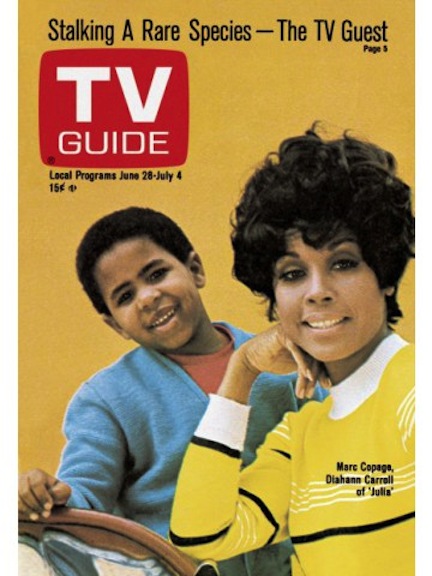
America could not get enough of the show that centered on a widowed nurse and her mischievous son.
NBC changed the title to “Julia,” and cast young Marc Copage as Julia’s son, Corey Baker. Veteran movie and TV star Lloyd Nolan was given the role of Dr. Morton Chegley, Julia’s employer. The cast was one of the first multiracial ones in American TV history, and it featured black actors in non-servile roles. Rather than playing chauffeurs, maids, cooks, and underlings, the African-American actors in “Julia” broke new territory. Here, they were cast as doctors, professors, health care professionals, and other positions that demanded education and training.
The public responded positively to the weekly antics of a young, beautiful mom and her curious, cute kid. The show was always in the top 10. Its fans cut across all races and ethnicities, ages and genders. “Julia” was a huge hit. So, it shouldn’t have been earthshattering that this runaway feel-good hit spawned tie-in merchandise. But it certainly was! In 1969, just a year after the nation held its collective breath in the wake of King’s murder, “Julia” was America’s sweetheart. Adults and kids couldn’t get enough of Diahann Carroll and Marc Copage. It was a matter of time before their images flooded the market.
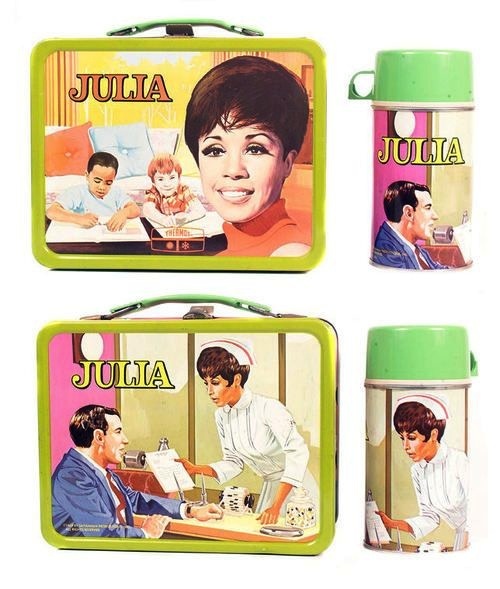
A blast from the past: metal lunchboxes that celebrated the TV character and her daily routine.
Lunchboxes and thermoses were cranked out with depictions of Diahann Carroll in both her mom role and her nursing professional role. Board games and playing cards boasted their likenesses. Naturally, dolls were a part of the merchandising onslaught, too. Paper dolls of Julia in her nursing whites and in casual clothing abounded. Additionally, paper dolls that showcased Diahann Carroll’s statuesque bearing were very popular. There were dolls that had the Julia character dressed like an everyday suburban mom, and others that definitely smacked of high fashion and opulence.

There were scads of paper dolls made to honor Diahann Carroll as Julia.
Mattel translated Julia into a fashion play doll in 1969. It has a significant place in doll history because of its African-American component, but also its celebrity status. It is one of the first Movie Star/Famous People portrait dolls done by Mattel. The Julia doll came in two distinct versions. One featured a “twist ‘n’ turn” waist, and the other was a talking version. The doll’s head was the Christie doll’s facial sculpt.
Diahann Carroll had made a living at one time as a fashion model and as a nightclub singer. She was known for her slim, regal allure. Even though the Julia character was a nurse, she was idealized in her doll incarnation. Her available wardrobe was birth and colorful, glamorous and gorgeous. Julia had to be one of the most perfectly coiffed and costumed dolls on the market. Since her body was Barbie’s silhouette, she could easily ease into any of that doll’s attire as well.
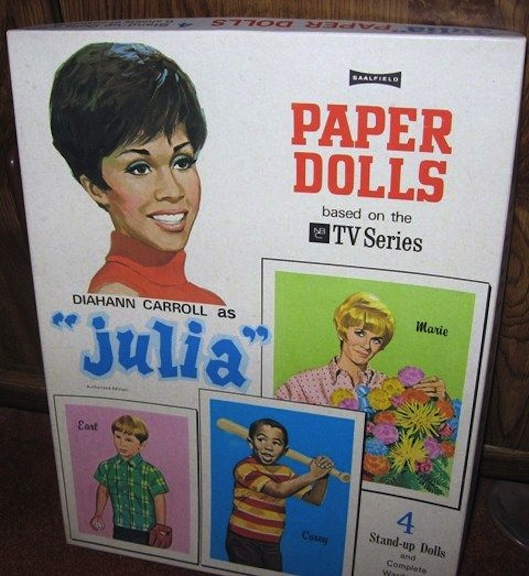
The cast of “Julia” was given the royal paper-doll treatment!
The “Julia” TV show ran until 1971. By that time, Diahann Carroll was ready to explore new challenges and opportunities. When asked about her connection with the character, Carroll was of two minds. She acknowledged that the nurse was dreamed up by a white producer and scripted by white writers. Still, she was always proud that she literally changed the complexion of TV. “For many people, ‘Julia’ was a fantasy show. It represented a mutual respect and a friendly work atmosphere that didn’t exist in many places at that time,” Carroll said. “If our show helped to show that that was possible, I’ll take that as an accomplishment to be proud of.”
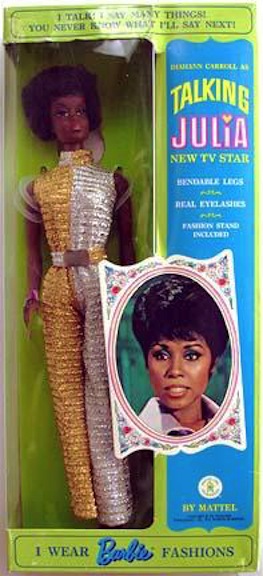
There were two versions of the 1969 Julia doll. Pictured here, the talking one, in original packaging.
The legacy of “Julia” never evaporated for doll collectors. The original doll was always searched for and bid upon on ebay. It was a hot property among Baby Boomer collectors. Knowing that, Mattel released a salute to the original in 2009.

Original 1969 doll with twisting-and-turning waist
For Barbie’s 50th birthday (that doll never looks her age) Mattel unveiled a Pink Label Barbie Doll Julia reproduction. Diahann Carroll won a Golden Globe for her Julia portrayal, and was nominated for the Emmy, too. The Julia doll is an honor on a different scale.
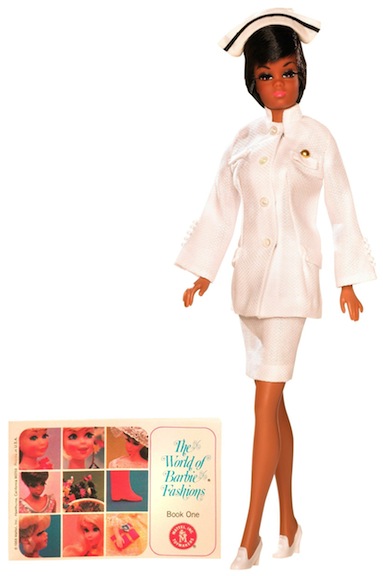
The 40th anniversary reproduction of Diahann Carroll as Julia, which keyed into Barbie’s 50th birthday, too!
Part of the Pop Culture Collection, the Bill Greening — designed Julia doll made a splash in 2009. It marked the 40th anniversary of the original Julia Barbie, and it stood as a reminder of many collectors’ childhoods. From 1969 through 1971, the “Julia” show was hailed as a leap forward. Later, critics and historians have pondered whether it was a “milestone or a millstone.” They argued that it weighed down Diahann Carroll’s career. She had to be a goody-goody role model and not stretch herself with more compelling parts. (In 1974, she did just that and netted an Oscar for her against-type role in “Claudine.”)
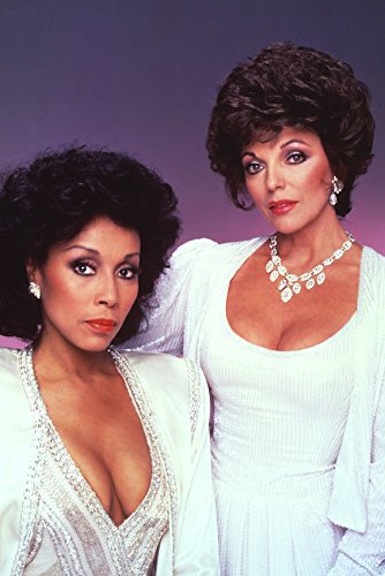
For many fans, Diahann Carroll was the fiery diva on “Dynasty,” shown here with her faux nemesis, Joan Collins.
Whether she was winning ovations in opera houses or taking bows on Broadway, Diahann Carroll was a star. To a generation of new TV viewers, she gained acclaim as a “biracial bitch” (her words) on “Dynasty.” She was never afraid to tackle different parts and characters. Despite her work ethic and hardworking résumé, Carroll never shrugged off her nurse’s cap and uniform. Forevermore, she was associated with the Julia part.
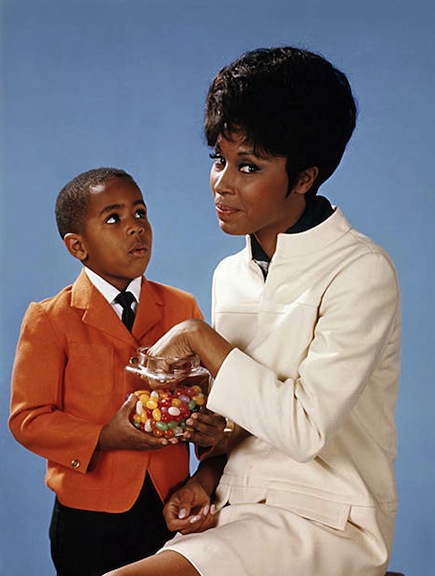
As the kind and relatable Julia, Diahann Carroll attained a rare level of stardom.
Luckily, doll collectors can own a part of that legacy in their hands. Diahann Carroll was one of the first stars, and first African-American personalities, to integrate the American toy aisle. Her life and times were admirable ones. Rest in peace, Ms. Carroll.




